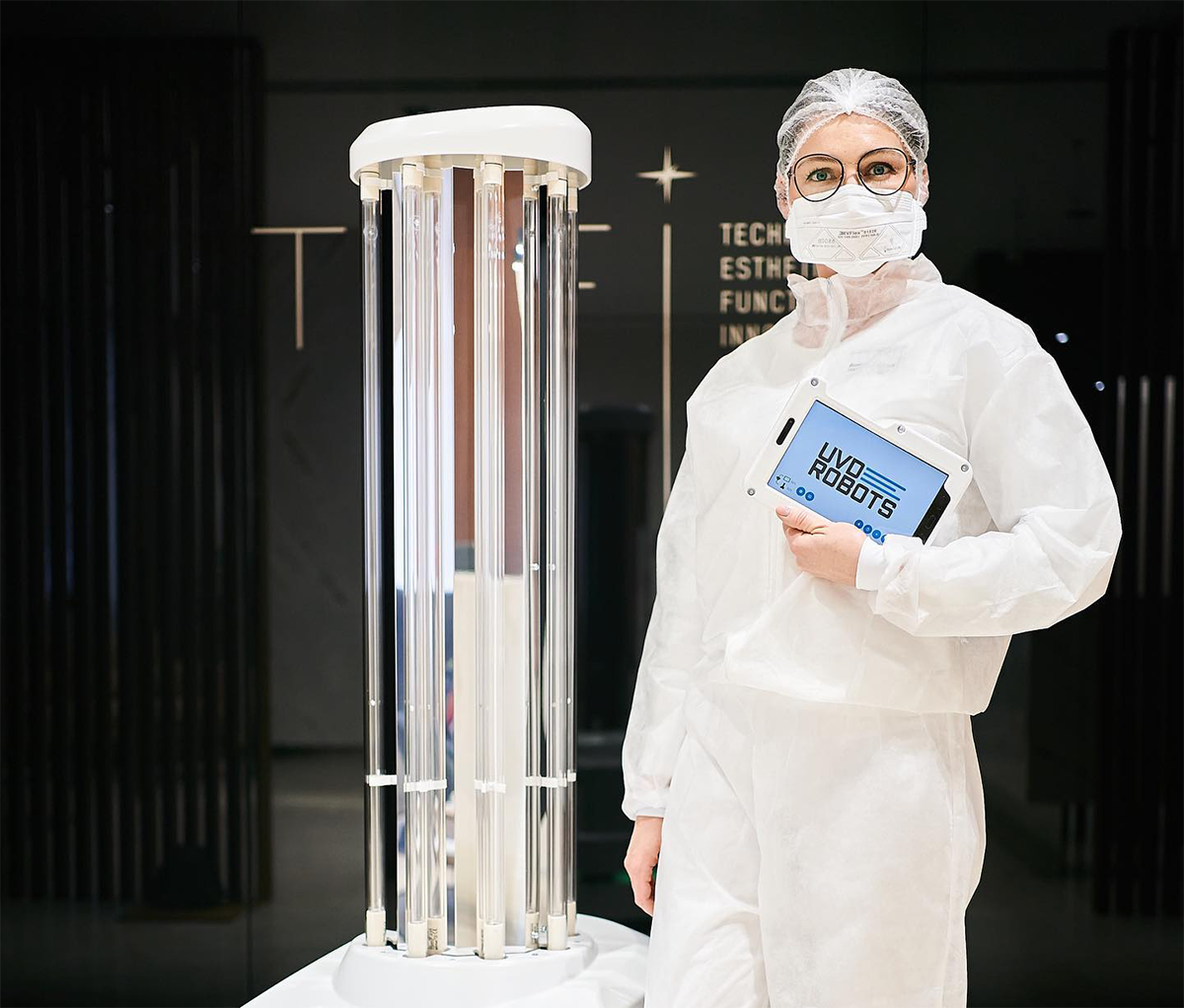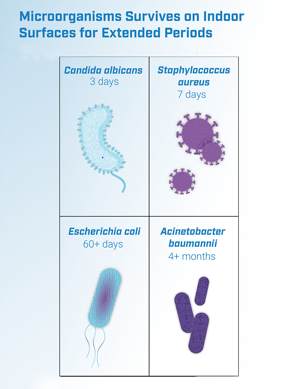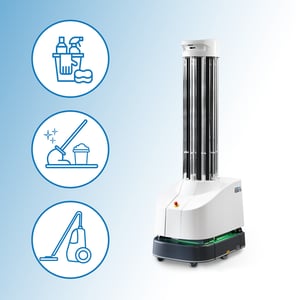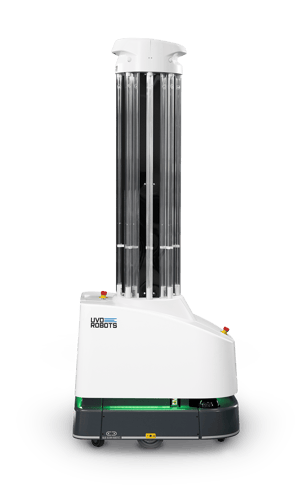Title
Content
Title
Content

Microorganisms can exist on surfaces for different lengths of time - but there are ways to deactivate them. Here is a closer look at the technology behind this.
In laboratory conditions, microorganisms have been found to survive on different indoor inanimate surfaces like plastic, glass, and stainless steel, for the following durations:

These microorganisms could potentially be long-lasting sources on environmental surfaces.
UVD Robots for Disinfection
UVD Robots are a series of self-navigating, mobile disinfection robots. These robots can maneuver through indoor areas autonomously, requiring little to no assistance for disinfection. Equipped with UV lamps, they emit 254 nanometer (nm) Ultraviolet C (UV-C) light, a type of light known for its disinfection properties.2
The UVD Robots have 3-log to over 7-log reduction rates when it comes to individual microorganisms, including:


UVD Robots provide fully automated disinfection solutions with predictable, and cost effective outcomes in various facilities. The autonomous UVD Robots present a groundbreaking solution to the challenges posed by shadows and distances. By leveraging advanced technology, The UVD Robot ensure the thorough irradiation of surfaces in a given area without the need for manual intervention. UVD Robots have been designed with feedback from specialists involved in cleaning and disinfection procedures with UV light. Our autonomous robot has several cutting-edge features that bring UV-C light disinfection to a higher level.
UVD Robots are easy to integrate with existing standard operating procedures and workflows for seamless workflow integration. The intuitive user interface and state of the art technology make installations and training easy, and will have your facility up and running in just a few hours.
Click the button to learn how our UVD Robots are using UV-C light to eliminate more than 99.99% of selected microorganisms in the environment by disinfecting with UV-C light.
3. Maule, A. "Survival of verocytotoxigenic Escherichia coli O157 in soil, water and on surfaces." Journal of Applied Microbiology 88.S1 (2000): 71S-78S.
6. Andersen, Helle Stendahl. Analysis Report: Test of UV Disinfection Robot acc. NF T72-281. Report Number 754372_Rev. 2. Danish Technological Institute, 2020.